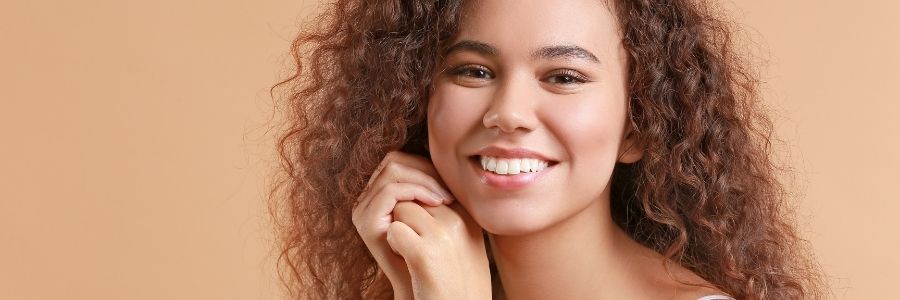Have you heard about microneedling to promote hair growth? Hair loss or thinning hair can affect both men and women and is not something that either takes lightly. It can cause a person to look years beyond their age and can wreak havoc on their self-esteem.
There are a plethora of articles and products marketed to these individuals who are desperate to stop their hair loss and to experience new growth. Most of the hair care products, vitamins, and solutions, found while searching the internet, claiming to regrow hair or stop hair loss, are only hype and there is no evidence that they work. Perhaps you have tried some of them with no visible results. Now it’s time to try microneedling.
Hair Growth Through Microneedling Treatments
Microneedling has been used for skin treatments since the 1990s and was first used to reduce the signs of scarring from acne. It has since gained popularity for use in alleviating stretch marks, brown spots, acne scars, fine lines and wrinkles, crepey skin, pigment issues, and hair loss.
Microneedling is a treatment that uses a handheld device crafted with a roller covered with tiny needles. The microscopic injuries that are created from the needles stimulate the skin to heal itself and produce collagen and elastin. When used on the scalp, it has been known to help with hair loss especially due to alopecia areata.
How Does Microneedling Work to Help Hair Loss?
Using the microneedling procedure on the scalp is much like using it on any other part of the body. An instrument called a dermaroller which is covered in tiny needles, ranging anywhere from less than 1 millimeter to a few millimeters in length, is used to perform the procedure.
First, the skin is numbed with a lidocaine-containing gel to help alleviate any discomfort. After 30-45 minutes, after the scalp is numb, the dermaroller is moved across the scalp, with firm pressure, in different directions, to effectively injure the stem cells contained in the hair follicles. This repeated, multidirectional rolling stimulates the body’s natural defenses to heal and regenerate the health of the hair follicles and can result in new hair growth or may thicken thinning hair.
Microneedling and Serums For Hair Growth
Aside from collagen production in the skin, microneedling creates channels in the skin so serums and treatments can penetrate deeper, be fully absorbed, and be more effective. Rogaine and Minoxidil are two well-known hair loss treatments. Two studies have reported that the effectiveness of Minoxidil was doubled or tripled when used in tandem with microneedling.
Two studies revealed that microneedling once a week with a 1.5 mm needle was more effective than an every other week schedule.
Both studies were conducted using 5% Minoxidil along with microneedling. The every other week group showed a 25% increase in hair count and the once a week group showed a 40% increase in hair count. Even though there were a few different factors in each study, it was clear that there is a link between the addition of microneedling and the increase in hair growth.
Haircare products from the medical line ORI⦁OR designed by Dr. Angelina Postoev feature unique formulas to target your hair wellness at the cellular level for healthier, thicker, and stronger hair.
Scalp Microneedling Side Effects
According to the American Academy of Dermatology (AAD), redness and inflammation may occur after the procedure but should diminish within 4 -5 days. Other side effects may include:
- Bruising;
- Drainage from the wounds;
- Pain, itching, or burning sensation;
- The scalp will be sensitive to the sun;
- Infection;
- Possible scarring.
At-Home Dermaroller Treatments
Some people attempt to perform their own microneedling procedures at home in an effort to save money and time. At-home dermaroller devices are marketed making them appear easy and cost-effective to use but there are some significant downsides to attempting a do-it-yourself medical type treatment.
Downsides of at-home scalp microneedling:
- Working outside of a sterile and sanitized environment;
- No knowledge of correct needle size to use;
- Inadequate access to certain parts of your own scalp;
- Misuse of the dermaroller/not properly rolling;
- Not knowing the proper procedure or when to stop;
- Inability to use the correct amount of pressure to be effective. Professional treatments are done using lidocaine to numb the area to alleviate pain due to the amount of pressure required;
- No access to professional treatments available that providers utilize to obtain the best results, such as platelet-rich plasma;
- No access to antibiotic cream that may be needed after treatments.
It may seem tempting to purchase your own dermaroller device, but it’s much safer to leave scalp microneedling in the hands of a licensed, trained, and experienced professional. A treatment performed by a professional will be more effective and they can also assist you with minimizing any side effects from the procedure. Let’s face it, you could end up going to see a health professional to obtain help for the resulting side effects if you mess yourself up.
Are You A Candidate For Scalp Microneedling?
If you are pregnant, have a history of eczema, any condition that affects your ability to heal, diabetes, or are taking blood thinners or similar medications you may not be a candidate for scalp microneedling. To determine if you are a candidate for scalp microneedling, set up a consultation with Dr. Angelina Postoev, MD, FACS, a triple board-certified cosmetic surgeon. Together you can determine a plan to help you achieve your desired results.
Still confused about microneedling options? Here’s your next read: Microdermabrasion Vs. Microneedling: Are They the Same?
Angelina Postoev, MD, FACS, a triple board-certified cosmetic surgeon, and Christopher Ibikunle, MD, FACS, offer microneedling treatments for men and women in Lawrenceville, Suwanee, Johns Creek, and the surrounding areas of Atlanta, Georgia.



